Often, complaints are received from citizens that, without their participation, the judge ruled in the case against them. The subject of indignation is the lack of a subpoena, which has recently been increasingly replaced by a phone call.
Civil case
Since 2002, thanks to the Code of Civil Procedure in the Russian Federation, a legal opportunity has appeared to hold a hearing without the personal presence of both the author of the statement of claim and the defendant, in certain cases even without representatives of both parties. Of course, in practice, each participant should be notified of the planned meeting, but he has the right not to attend if there are good reasons for this.
After some time, additions were made to the article: the court can be held without a defendant 3 times in a row, and at the fourth meeting the case can be considered without it.
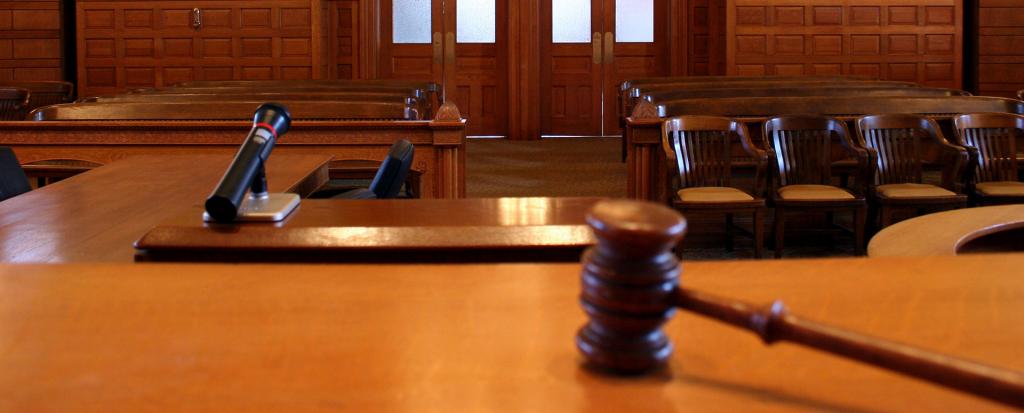
Stakeholders in a civil case are both the plaintiff, who knows the date of the trial from the clerk, and the defendant, who theoretically received a subpoena. Some courts (for example, Primorsky) practice remote viewing of information and post information on their special website. As a result, often the defendant remains in the dark and runs the risk of knowingly losing the case.
Order of distribution of summons
This procedure is described in:
- Code of Civil Procedure (Code of Civil Procedure);
- government decree "On approval of the rules for the provision of postal services";
- set of rules for litigation.
The Code of Civil Procedure says that all interested citizens are invited to court by means of an official letter (registered) or a subpoena with notification of receipt by the addressee. Telegrams, telephone messages and other means of communication are considered alternative methods of notification, due to which the attendance of all interested citizens is ensured.
Phone call
The telephone message is one of the most accessible, but also the least provable options for calling the court. Tracking and confirming a call is difficult. It should be noted that the Civil Procedural Code pays a lot of attention to official notification, but there is no information about situations when it comes to a phone call, the fact of which must be proved. All provisions of the code in question, reflecting the procedure for serving a subpoena, lose their force in a controversial situation, because there the information is more suitable for subpoenas transmitted on paper rather than by telephone.

Another alternative in informing a citizen is a telegram, which is handed personally in hand or can be obtained by mail. This method is used to alert those who are afraid of the word “summons,” but who do not ignore telegrams. The time of its delivery is prescribed by the representative of the post office.
Executive production
The work of bailiffs is often associated with the seizure of property in connection with the non-payment of monetary debt or a fine. If a citizen was absent from the court session and did not receive court summons and notices, he is likely to see representatives of the enforcement department 7 days later at the threshold of his house. Officially, after a ruling is made, a seven-day period is granted for voluntary repayment of a debt or for appeal to a court (extension of the appeal period).
If it turned out that the hearing was held without the presence of the defendant and without his knowledge, in case of disagreement with the decision made, it is necessary to urgently appeal to the court with a request for review of the case.At this time, the bailiffs will not bother.
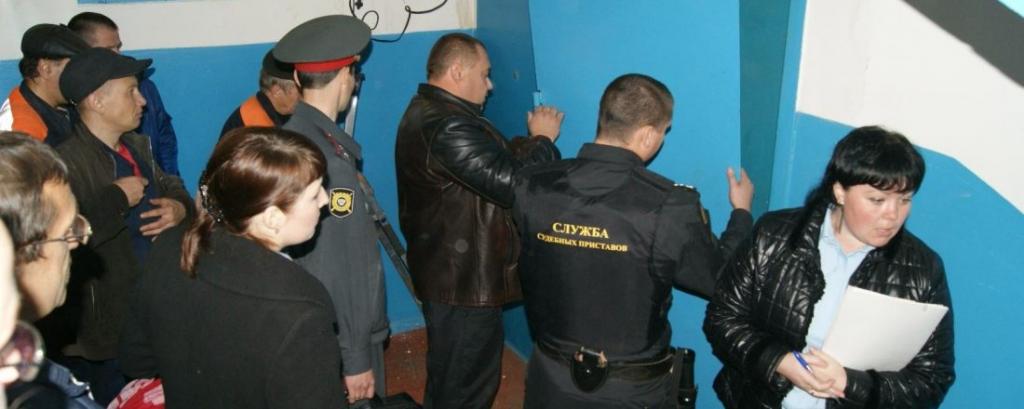
Civil cases, considered without the presence of the respondent in the statement of claim, most often were initially opened at the request of banks, the tax service, collection agencies. In such relatively obvious cases, the fault of the defendant, which is the debtor, is proved quite simply. In the case of the plaintiff represented by a company whose activities are based on life, health and property insurance, a different story.
It is recommended here to find out how the office notified the parties concerned and on what evidence the judge considered the outcome of the case to be obvious. A civil subpoena is no less important than other categories of cases and must be presented to the defendant before the date of the hearing so that he has time to prepare supporting documents as evidence.
Hiding from notifications
In administrative cases, they face the reluctance of the defendant to receive summons. This approach to business is chosen in order to avoid administrative liability due to failure to appear. The limitation period for the consideration of such hearings is 2 months, and if during this period the case due to the fault of the defendant was not brought to its completion, the latter will benefit. An amnesty for an administrative offender occurs when the judge fails to show up for a good reason, but if the meetings have already been officially scheduled, the judge will make a decision without a defendant in the fourth one.

GPC Articles
Article 113 states that citizens (participants in the case) are notified of an impending court session by registered letter or subpoena with delivery confirmation, a telegram or telephone message and other means of communication providing for the recording of the judicial notice and its delivery to the addressee.
Article 167 warns that if all participants in the proceedings are aware of the place and time of the court hearing in case someone fails to appear, without providing information about an important reason, the reasons for their absence are treated as disrespectful. The court may consider the case without the participation of the defendant, if he was aware of the meeting by judicial notice and did not appear at will, without justifiable grounds for failure to appear.
Subpoena
Form No. 30 consists of 4 pages. On the first page of the civil court appeal, it is indicated which court sends the notice, the name of the addressee, who the citizen is invited to, the date and time of the hearing and his name, so that the person understands what kind of person he is becoming involved in. The following is a note that the court invites the parties to present evidence in the case, which is allowed by Articles 56 and 57 of the Code of Civil Procedure of the Russian Federation. At the end of the page is the signature of the secretary.
The second page describes the consequences of not appearing on a call:
- in the absence of valid reasons, the court may consider the case in the absence of the defendant;
- in case of non-appearance of the plaintiff who did not ask to consider the case in his absence, who did not come on the second call, and in the absence of claims of the defendant regarding the consideration of the merits of the case, the application is left without consideration;
- failure to appear on both sides without good reason entails either the resolution of the case on the available materials, or dismissal.
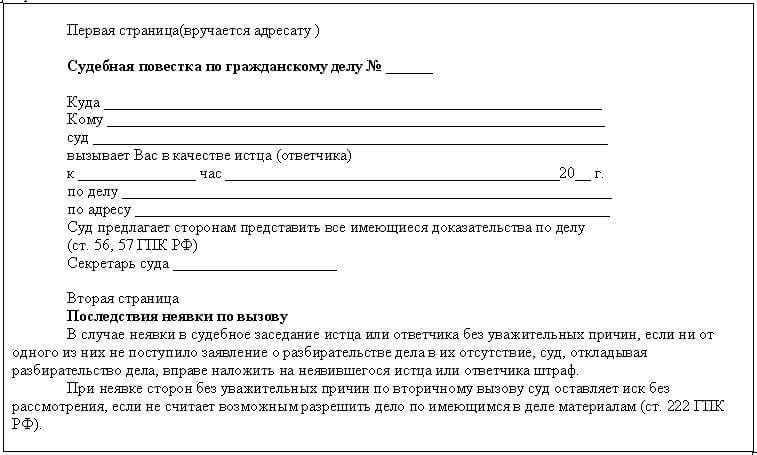
The third page of the court summons in a civil case is a receipt template where a citizen marks that he has received this notice and is aware of the scheduled hearing. Mandatory signatures of the recipient and letter carrier.
The fourth page shows the data of the return notification and the address of the court. At the end of the sheet, the rules for handing the agenda are prescribed:
- personally on receipt;
- if the addressee is not at the place of residence or work, it can be handed over to adult members of the family or administration at the place of work against receipt for the purpose of further transfer to the addressee;
- in case of temporary absence of the recipient, the person who delivers notes in a special field (in the second half of the notice) where the addressee has left and the date of his potential return;
- in case of refusal to accept the summons, the delivery person makes an appropriate mark there and returns the document back to the court.
Judicial Notice
The legal term is used in relation to the persons participating in the case, in contrast to the “judicial call”, which applies to specialists, experts, translators and witnesses. The subpoena is one of the forms of judicial notice, where the time, date, place of the meeting or other procedural actions is prescribed. When calling those interested in a trial, copies of procedural documents are sent along with a notice in the form of a registered letter or subpoena.
In case of a call for the purpose of conducting a conversation with the parties or other persons, a corresponding notice is sent, other than the summons.

A sample of the subpoena and other notifications is developed in accordance with the Instruction for the Court Proceedings in the District Court. The document is approved by the Order of the Judicial Department at the Supreme Court of the Russian Federation (dated April 29, 2003).
Information and details
The notice of the call to the court session must contain the details of the parties, information on the submission of evidence in the case to the court, warnings about the consequences of the failure to appear and not providing arguments and justifications, which can be expressed in the form of documents or material evidence, as well as a possible outcome in case of refusal addressee accept subpoena.
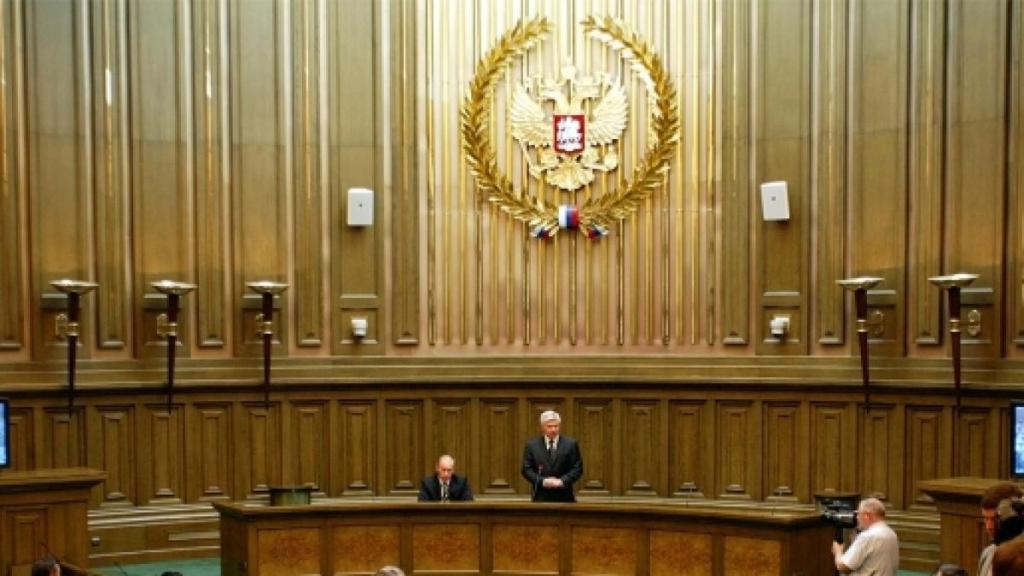
Witnesses who have not reached the age of 16 are called together with legal representatives (parents), to whom notifications are also sent. The summons is sent to all participants in the process after the appointment of the case for consideration (no later than the next day). At the same time, the defendant is sent a copy of the statement of claim, the plaintiff - a copy of the defendant’s explanations in writing, if any, the court has.
Addressee - legal entity
The notice is sent to the address indicated in the case (provided by another participant in the case). If the citizen does not live at this address, the summons is sent to the place of his work, if the organization turned out to be the opponent - at the place of location (state registration), if his representative did not apply for a referral by other details.

The summons addressed to the company may be sent at the location of its main branch, the address is most often indicated in the constituent documents. If the notice was not handed to the legal entity and returned with the appropriate note that it was absent at the indicated address, and the addressee’s location cannot be traced from the case file, the plaintiff will be asked to provide written data on where the organization is located.
Documentary confirmation
All notices and documentary evidence that the persons were duly notified should be in the file. The time for delivery of subpoenas is fixed by the postal organizations or on the document to be returned to the court. If the subsequent consideration of the case is scheduled at a meeting or conversation, the judge invites the parties in his presence to put a signature on the agenda, thereby officially informing about the next hearing.
If desired and consent of the person taking part in the case, he may be issued a summons intended for another called person for personal transfer. This practice occurs in relation to almost all potential participants in the process, but depending on the situation. A citizen who was instructed to deliver a summons is obliged to return a spine to the court with a note on receipt by the addressee.

Criminal Summons
The appearance of the notice is similar in its elements to other notifications in civil and administrative cases.It is spread over four pages and has the form No. 29. The first page indicates the number of the criminal case, the addressee directing the judicial institution, the date, time and place of the hearing. Be sure to have the signature of the secretary. The second page describes:
- the obligation of the involved citizens as a witness, expert, victim - to appear in a timely manner at the hearing;
- an explanation of the costs to be paid associated with the appearance at the place and the reimbursement of the costs of the appearance provided for by the Code of Criminal Procedure of the Russian Federation 131;
- warning of possible consequences and measures applied in case of failure to appear without good reason (Articles 117, 113, 112 of the Code of Criminal Procedure).
A receipt is placed on the third page, where the addressee and the letter carrier are obliged to leave a note on when, by whom and to whom the notice was given. On the last page there is a notice of receipt of a subpoena and delivery rules, which are similar to the above rules for the transfer of a subpoena to resolve civil claims.
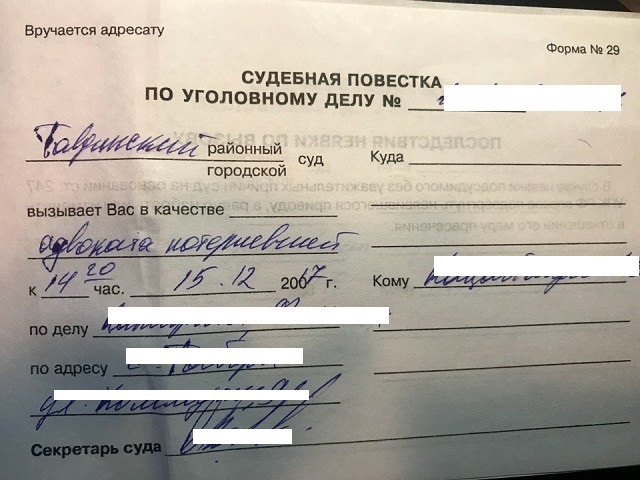
Administrative case
The sample document in its structure resembles the identical written warnings discussed above. The administrative summons is located on four pages, the key differences are in the form number 52, as well as in the links to the Code of Administrative Offenses of the Russian Federation (on the second page) of Art. 27.15. The rules for handing the summons are the same for each type of trial.
